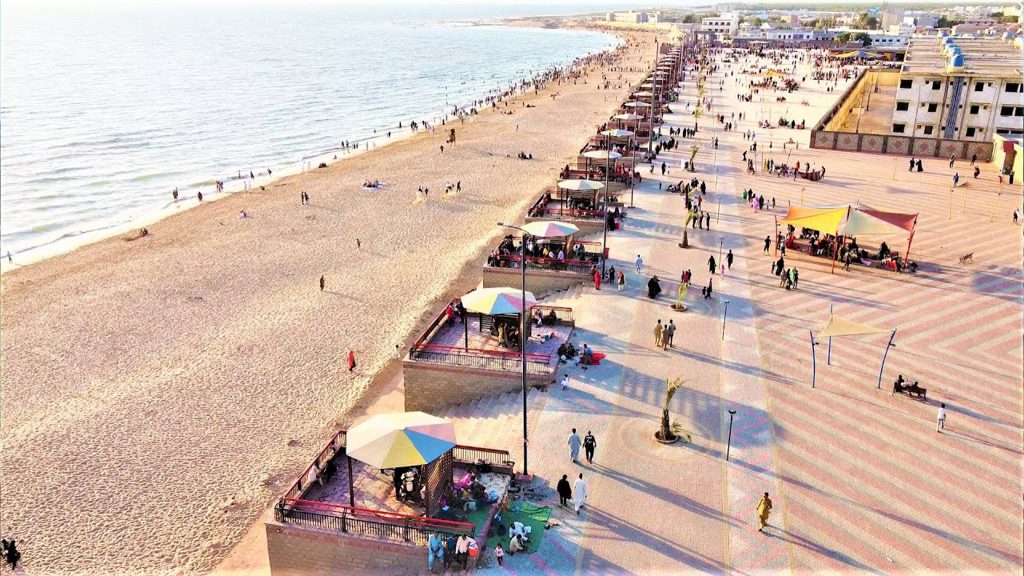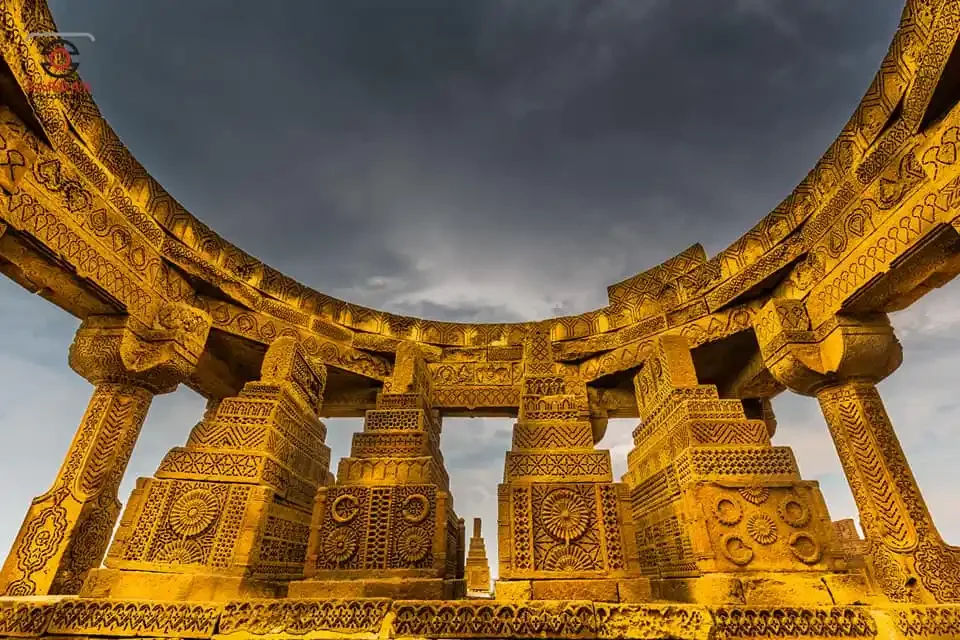Introduction
The Chaukhandi Tombs are a remarkable collection of funerary monuments located near Karachi, in the Sindh province of Pakistan. These tombs, dating back to the 15th to 18th centuries, are known for their intricate stone-carved designs and represent a unique form of Islamic architecture that blends regional styles. The tombs are a testament to the craftsmanship and cultural significance of the Sindhi people and their heritage.
Location.
The Chaukhandi Tombs are located approximately 29 kilometers east of Karachi, along the National Highway, in the region known as Chaukhandi.The tombs are spread across a large area, surrounded by arid landscapes, with the imposing structures rising above the plains.
Historical Background.
The Chaukhandi Tombs were mainly constructed during the Soomro, Samma, and Mughal dynasties, spanning from the 15th to the 18th centuries, reflecting the artistic and architectural influence of these eras.These tombs are the final resting places of the prominent families of Sindh, particularly military leaders, nobility, and aristocrats. The term “Chaukhandi” refers to the square shape of the tombs, which is a distinctive feature of these monuments.
The tombs’ carvings and architecture serve as a reflection of the regional craftsmanship and the cultural diversity of Sindh. They are believed to have been built not only to honor the deceased but also to symbolize the power and status of the families they represent.
Architectural Features.
The Chaukhandi Tombs are known for their elaborate and unique stone carvings, which distinguish them from other burial sites in the region. Key architectural elements include:
Square Shape: The most notable feature of these tombs is their square, chaukhandi (four-cornered) design. This square shape is symbolic of the four pillars of existence: life, death, the afterlife, and rebirth, representing the cyclical nature of life in the cultural and spiritual context of the tombs.
Intricate Carvings: The tombs are adorned with detailed geometric patterns, floral motifs, and calligraphy. These intricate carvings reflect Islamic art and local craftsmanship. The tombs often feature motifs such as horses, weapons, and human figures, symbolizing the occupation and status of the deceased.
Stone Construction: The tombs are made from sandstone, with a solid structure and flat roofs. The use of locally sourced stone and advanced construction techniques showcases the engineering prowess of the time.
Monumental Designs: Some of the larger tombs feature decorative domes, while others have finely detailed panels that create a visual sense of depth and grandeur.
Gravestones: The actual graves within these tombs are usually placed beneath intricately carved slabs, which include the names and titles of the deceased, further emphasizing the social status of the buried individuals.
Significance and Cultural Importance.
The Chaukhandi Tombs are not just architectural wonders; they also hold great cultural and historical importance. The site is an example of Sindhi Islamic funerary art and is believed to be one of the largest and most significant collections of Islamic burial sites in the region.
These tombs reflect the region’s rich cultural diversity, blending Islamic art with indigenous Sindhi motifs. The tombs also highlight the social structure of the time, with the elaborate designs of the tombs symbolizing the wealth, power, and status of the individuals buried there.
In 1981, the Chaukhandi Tombs were designated as a National Monument of Pakistan and are considered an important part of the country’s cultural heritage. They attract scholars, archaeologists, and tourists interested in exploring the history and art of Sindh.
Tourism and Accessibility.
Today, the Chaukhandi Tombs stand as a significant historical site, attracting visitors from around the world. Tourists come to admire the intricate carvings and learn about the region’s rich Islamic and Sindhi history.
Visiting the Site: The tombs are open to visitors, with local guides available to provide historical context and details about the tombs’ design and significance.
Preservation Efforts: Efforts have been made to preserve the tombs, including maintaining the site and protecting it from vandalism and natural degradation.
The tombs are located near Karachi, making them an easy day-trip destination for those exploring the city and the surrounding areas.
Conclusion.
The Chaukhandi Tombs are a stunning reminder of the architectural and cultural heritage of Sindh. With their distinct square design, elaborate carvings, and historical significance, they provide a unique insight into the art, architecture, and traditions of the region. The site continues to be an important cultural landmark and a must-visit for anyone interested in the history of Pakistan and the Mughal influence on South Asian architecture.





 Uncategorized7 years ago
Uncategorized7 years ago
 Uncategorized7 years ago
Uncategorized7 years ago
 Uncategorized7 years ago
Uncategorized7 years ago
 Uncategorized7 years ago
Uncategorized7 years ago
 Uncategorized7 years ago
Uncategorized7 years ago
 Uncategorized7 years ago
Uncategorized7 years ago
 Uncategorized7 years ago
Uncategorized7 years ago
 Peshawar7 years ago
Peshawar7 years ago



